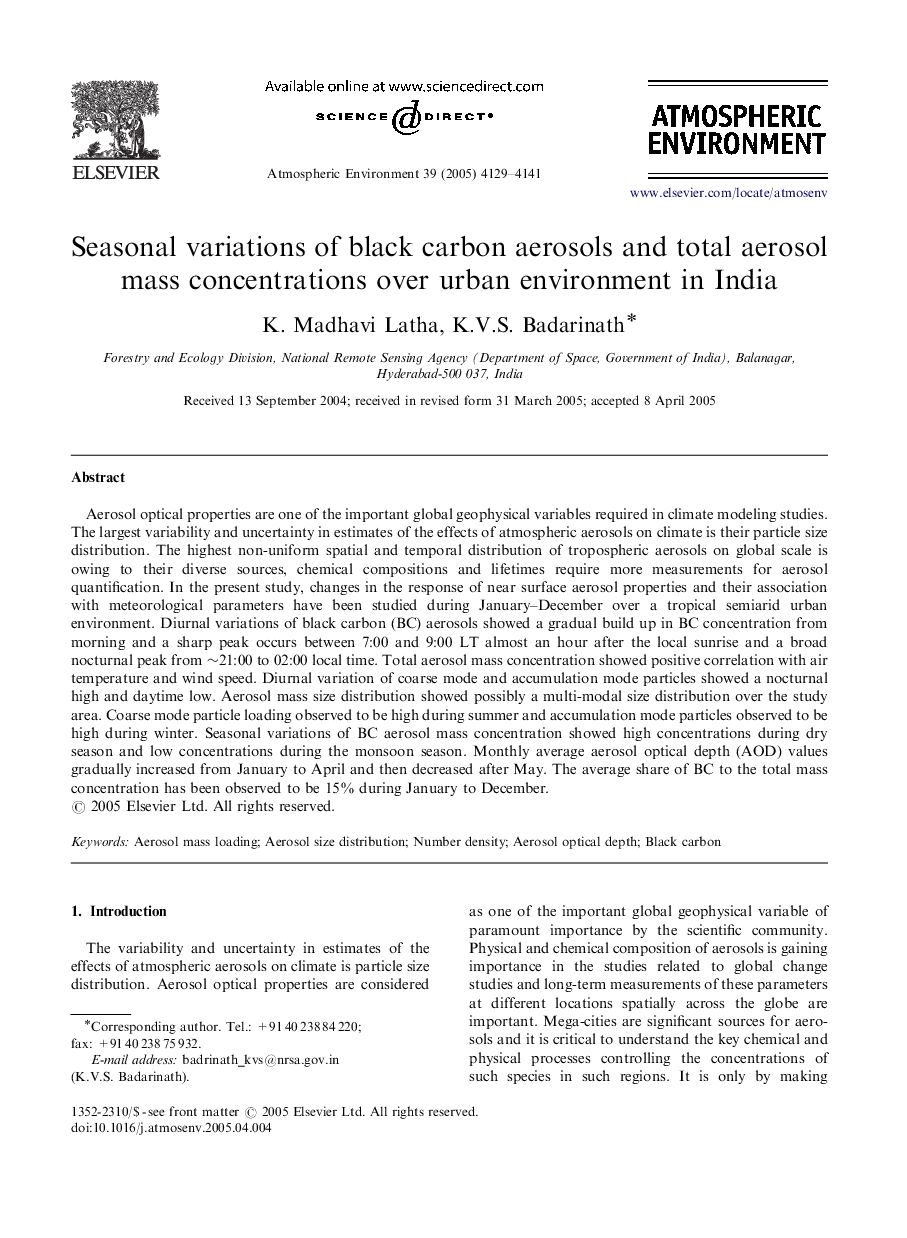| Article ID | Journal | Published Year | Pages | File Type |
|---|---|---|---|---|
| 4445296 | Atmospheric Environment | 2005 | 13 Pages |
Aerosol optical properties are one of the important global geophysical variables required in climate modeling studies. The largest variability and uncertainty in estimates of the effects of atmospheric aerosols on climate is their particle size distribution. The highest non-uniform spatial and temporal distribution of tropospheric aerosols on global scale is owing to their diverse sources, chemical compositions and lifetimes require more measurements for aerosol quantification. In the present study, changes in the response of near surface aerosol properties and their association with meteorological parameters have been studied during January–December over a tropical semiarid urban environment. Diurnal variations of black carbon (BC) aerosols showed a gradual build up in BC concentration from morning and a sharp peak occurs between 7:00 and 9:00 LT almost an hour after the local sunrise and a broad nocturnal peak from ∼21:00 to 02:00 local time. Total aerosol mass concentration showed positive correlation with air temperature and wind speed. Diurnal variation of coarse mode and accumulation mode particles showed a nocturnal high and daytime low. Aerosol mass size distribution showed possibly a multi-modal size distribution over the study area. Coarse mode particle loading observed to be high during summer and accumulation mode particles observed to be high during winter. Seasonal variations of BC aerosol mass concentration showed high concentrations during dry season and low concentrations during the monsoon season. Monthly average aerosol optical depth (AOD) values gradually increased from January to April and then decreased after May. The average share of BC to the total mass concentration has been observed to be 15% during January to December.
